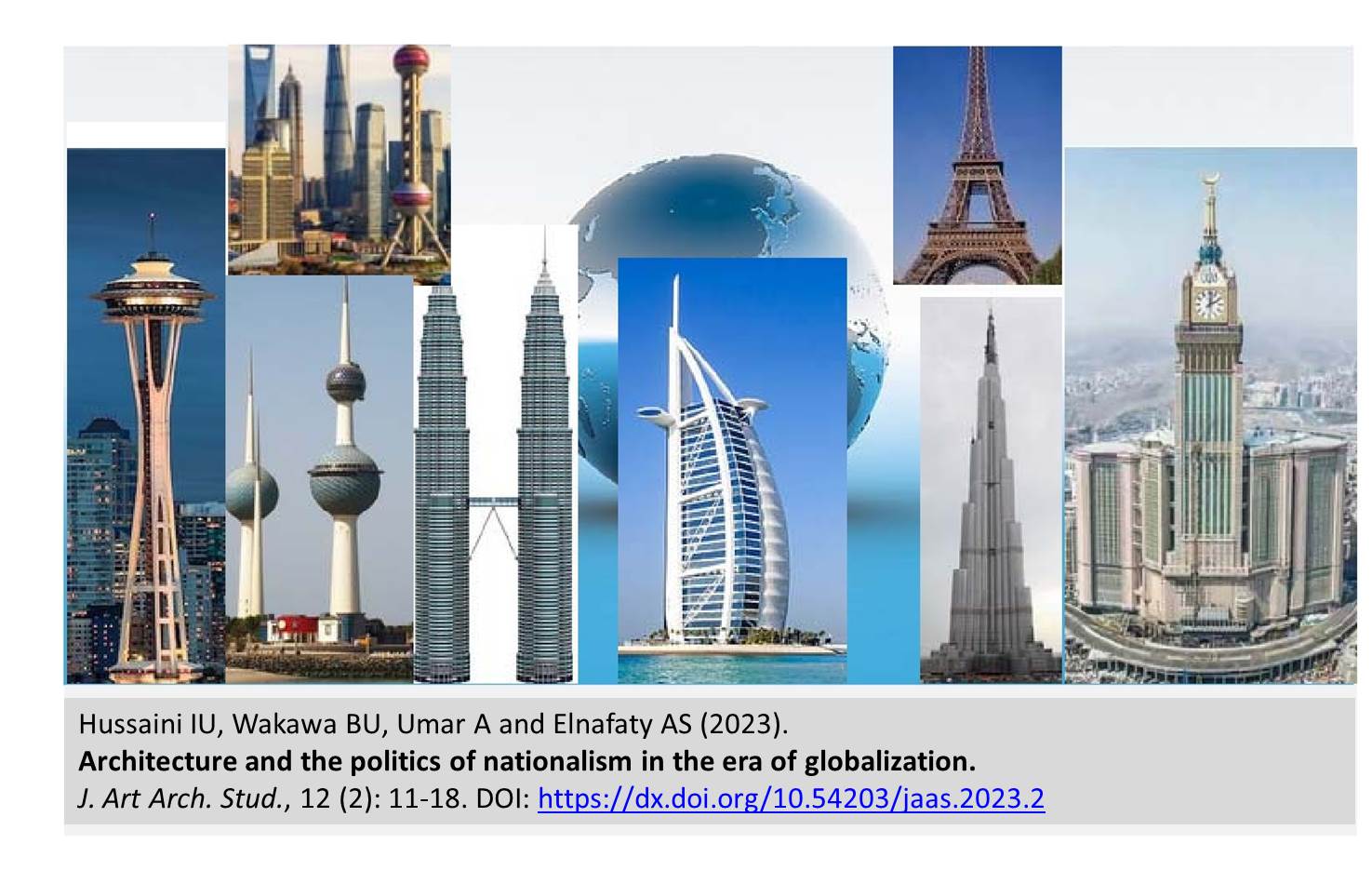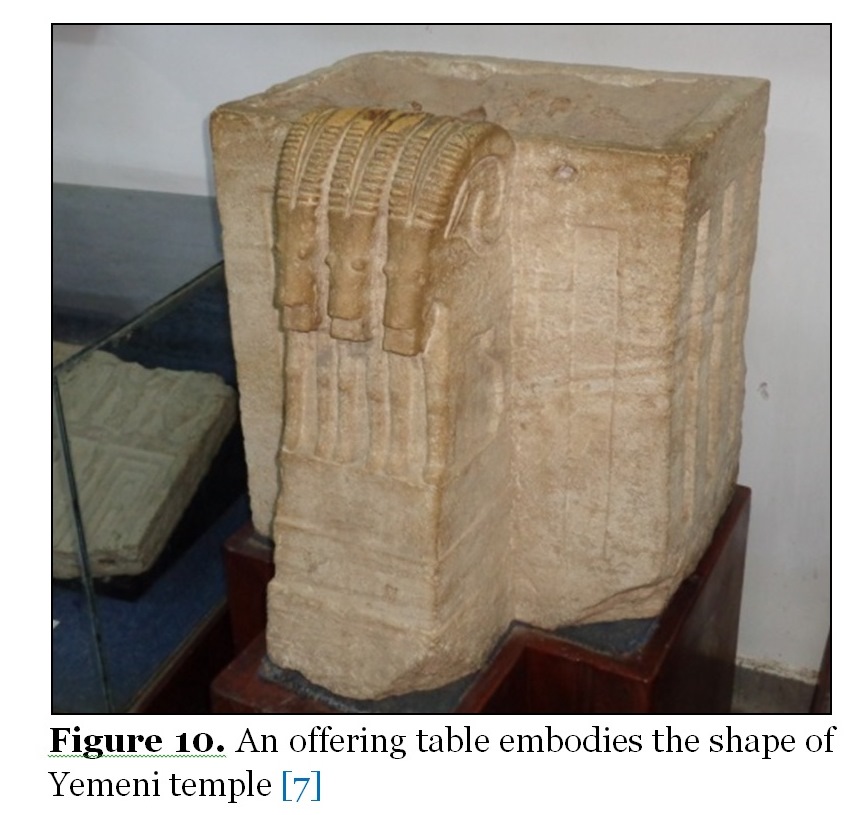Previous issue | Next issue | Archive
![]() Volume 12 (2); December 15, 2023
Volume 12 (2); December 15, 2023
Architecture and the politics of nationalism in the era of globalization
|
|
Hussaini IU, Wakawa BU, Umar A and Elnafaty AS.
J. Art Arch. Stud., 12(2): 11-18, 2023; pii:S238315532300002-12
DOI: https://dx.doi.org/10.54203/jaas.2023.2
ABSTRACT
Architecture is a physical force and a communication medium that speaks to power of value and ideals of a society through effective communication of socio-political messages embedded in its physical configurations. It helps to create the physical as well as the political institutions of establishments in the society that embodies the civilization codes of “law and order.” However, the power of architecture as a political propaganda tool is reminiscent of nationalism in many facets and circumstances. In the past imperial establishments, the ruler used architecture as a control tool to influence the people’s perception of the state and the achievements of the civilization. Whereas, the later civilization of globalization in the 21st century helps to create the institutional establishments of democratic architecture with a renewed strategy to wield power to entertain and gain political and socio-economic supports for the governments and corporate organizations. This review therefore demonstrates the role of architecture in the politics of power and influence vividly evident in the emergent democracies and some current establishments of globalization, a case reference of Dubai.
Keywords: Architecture, Politics, Nationalism, Civilization, Globalization.
[Full text-PDF] [Crossref Metadata] [Export from ePrints]
Research Paper
The architectural features of nursing homes affect the residents' sense of home
Aliyari M.
J. Art Arch. Stud., 12(2): 19-26, 2023; pii:S238315532300003-12
DOI: https://dx.doi.org/10.54203/jaas.2023.3
ABSTRACT
Following the increase in the elderly population in Europe and other parts of the world, taking proper care of elderly people has recently become a significant concern in Iran as well. The architecture and design of nursing homes can have a profound impact on the sense of home and well-being of the elderly residing in these facilities. Therefore, the aim of this study is to determine the relationship between influential architectural factors in the nursing homes of District 10 of Tehran and the sense of home among the elderly. The research method used in this study was descriptive correlational, and data collection was carried out in two stages: library and documentary research, as well as field survey. A purposive sample of 45 elderly residents of nursing homes in District 10 of Tehran were studied using two questionnaires on design and architectural factors of nursing homes and the motivation for living. The results showed that the correlation coefficients of the design and architectural factors and their components concerning lighting, public private and spaces, accessibility, and green spaces with the sense of home among the elderly were 0.521, 0.224, 0.621, 0.413, 0.281, and 0.403, respectively. Based on the findings of this research, it can be concluded that the design aspect has a direct impact on the formation of the sense of home in the elderly, and it is not possible to separate the physical and environmental aspects from the psychological dimension of the elderly.
Keywords: Elderly, Sense Of Home, Architecture, Care
[Full text-PDF] [Crossref Metadata] [Export from ePrints]
A review of limitations and future challenges in optimization of energy in sustainable high-rise buildings
|
|
Kadaei S.
J. Art Arch. Stud., 12(2): 27-34, 2023; pii:S238315532300004-12
DOI: https://dx.doi.org/10.54203/jaas.2023.4
ABSTRACT
Sustainability has been one of architecture’s most significant trends over the last twenty years. Environmental consciousness of professionals has put sustainability at the heart of the architectural profession and has contributed to adopting and implementing sustainable designs on the scale of urban landscapes. Buildings consume 40% of global energy, in which high-rise buildings account for a significant proportion of the total energy used. Hence, present study reviews limitations and future challenges in optimization of energy in sustainable high-rise buildings. Results of this study show that budget limitations, managerial and organizational policies, legal issues, technical and scientific infrastructure, and cultural and geographical aspects are all affecting the widespread use from energy optimization in current high-rise buildings and need to be considered in future studies.
Keywords: Energy, Sustainable Architecture, High-Rise Building.
[Full text-PDF] [Crossref Metadata] [Export from ePrints]
The form and content in the architecture of the Yemeni temple gate: the gate of the Baran temple in Ma’rib as a model
|
|
Al-Nehmi AA.
J. Art Arch. Stud., 12(2): 35-43, 2023; pii:S238315532300005-12
DOI: https://dx.doi.org/10.54203/jaas.2023.5
ABSTRACT
Architecture has been considered one of the most expressive means for humans since the beginning of settlement. It carries two aspects, one of which is physical, which is the visible and tangible form. The other is non- physical, which is the intellectual content that the form reveals. Yemeni architecture in general and the architecture of temple gates in particular were shaped by the local environment and social culture. The Yemeni person tried to express his visions, beliefs, and perceptions in a unique architectural form that is distinct from others in an embodied and abstract form. The current research attempts to investigate the content that the architectural form of the Yemeni temple gates carried in form and details. The research focuses on tracing the relationship between the idea and the symbol of portal architecture from the stage of embodiment to the stage of abstraction. The research relies on descriptive and analytical approaches and comparative approaches to compare the gates with their counterparts in the kingdoms of ancient Yemen to determine the similarities and differences the extent of influence between the kingdoms. It aims to analyze the architectural form of the gate in a comprehensive and detailed manner to identify intellectual sources. The study reached an understanding of the architectural form of the temple gates and their contents. Yemeni thought was characterized by integration in embodiment and abstraction. The Yemeni architect turned to signs and symbols in order to give the form the character of embodiment through abstraction, while preserving the main features of the inspired form.
Keywords: Architectural Form, Temples, Yemeni Architecture, Gates, Sheba, Ancient Yemen.
[Full text-PDF] [Crossref Metadata] [Export from ePrints]
Previous issue | Next issue | Archive



